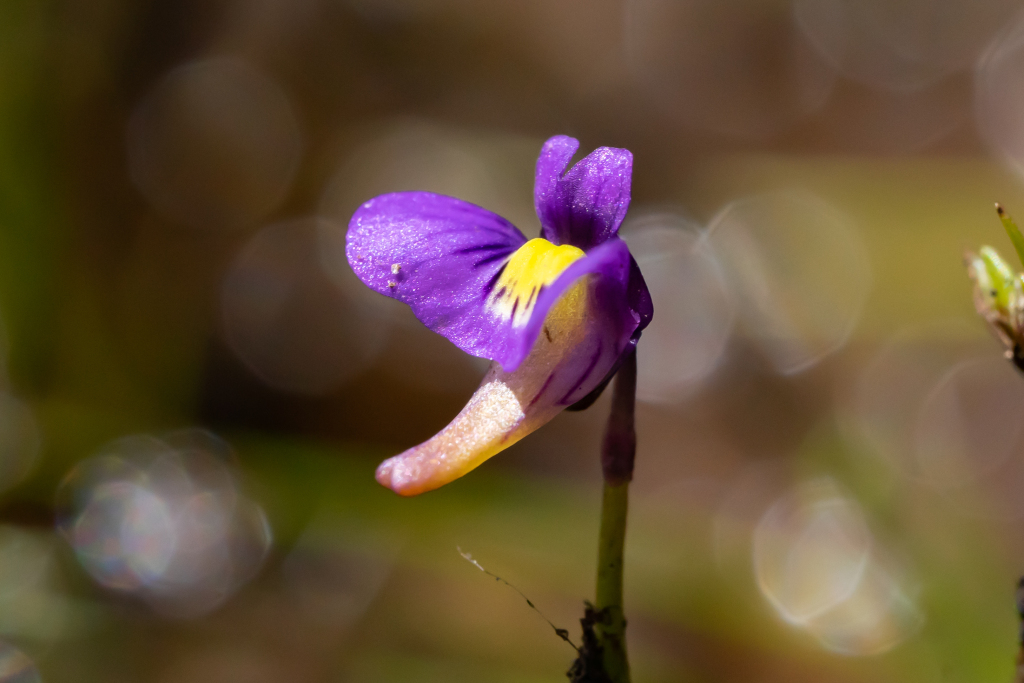Utricularia violacea
R.Br. Violet BladderwortTerrestrial annual; stolons absent. Leaves numerous, rosetted, rosettes 1.2-1.5 cm in diameter, leaves narrowly linear-cuneate to spathulate, 4-5(-12) mm long, c. (0.5-)3 mm wide. Traps moderately numerous from the stem, obliquely ovoid, 1.5-2 mm long, dorsal appendage above trap opening subulate, c. 1mm long, fringed on inner margin, lateral appendages 0.45-0.5 mm long, distally fimbriate. Racemes 1-4, erect, 2.5-10 cm long, 1-flowered; sterile bracts absent; fertile bracts medifixed, c. 1.5 mm long; bracteoles similar to bracts; calyx-lobes subequal, upper lobe broadly obovate, 1.8-2 mm long, 2-2.2 mm wide, lower lobe broadly ovate, 1.4-1.5 mm long, 1.9-2 mm wide. Corolla 4-9 mm long, lower lip violet, palate glabrous, pale yellow with 4 raised ridges subtended by c. 3 dark violet or maroon lines; upper lip obovate, bilobed; lower lip much larger, transversely oblong or elliptic, obscurely to markedly 3-lobed; spur cylindric from a conical base, c. twice as long as lower lip. Capsule globose, 1.5-2 mm diam.; seeds ovoid, c. 0.3 mm diam. Flowers mostly Oct.–Dec.
LoM, Wim, GleP, VVP, DunT. Also WA, SA, Tas. (Bass Strait islands). Rare in Victoria where apparently confined to wet heaths and swamps in the south-west between the Little Desert and Portland.
Jeanes, J.A. (1999). Lentibulariaceae. In: Walsh, N.G.; Entwisle, T.J., Flora of Victoria Vol. 4, Cornaceae to Asteraceae, pp. 547–553. Inkata Press, Melbourne.
 Spinning
SpinningLowrie, A. (2013). Carnivorous Plants of Australia: Magnum Opus vol. 3. Redfern Natural History Productions Ltd., Poole, Dorset, England.



